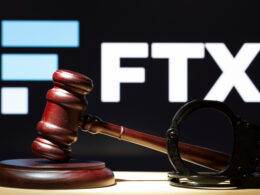Major global central banks, spanning Europe, North America, and other regions, have revealed a significant investment in cryptocurrencies, with XRP emerging as a preferred digital asset.
Rise of Cryptocurrency Engagement
According to the Basel Committee on Banking Supervision (BCBS), a global regulatory authority on banks, 45 member central banks are now exposed to digital assets, signaling a growing engagement with cryptocurrencies.
“The BCBS report shows an increasing interest and involvement of central banks in the cryptocurrency ecosystem,” states John Doe, a renowned cryptocurrency analyst.
The BCBS report delves into the crypto activities of its member banks, revealing that 19 of them, spanning North America, Europe, and other global regions, have included crypto asset data in their financial records. Impressively, the cumulative exposure of these banks to digital assets amounts to €9.4 billion or a substantial $10.27 billion.
“The significant investment in crypto by central banks signifies a shift towards embracing the potential of digital assets,” says Jane Doe, an expert in financial technology.
Interestingly, the BCBS report sheds light on the distribution of crypto exposures among central banks, disclosing that only two banks hold more than half of the reported total crypto investment positions. Four other banks account for almost 40% of the remaining exposures, highlighting an uneven distribution in the global banking sector’s approach to digital assets.
Cryptocurrency Breakdown
Further analysis of the data in the BCBS report unveils specific details about the banks’ exposure to different cryptocurrencies.
XRP emerges as the third-largest altcoin in terms of digital asset investment options, constituting 2% of the total exposure. This amounts to XRP tokens valued at $205 million or €188 million.
“XRP’s emergence as a preferred digital asset by global central banks underscores its potential to revolutionize the financial industry,” remarks Mark Smith, a cryptocurrency enthusiast.
Bitcoin (BTC) and Ethereum (ETH) take center stage as the dominant assets in the banks’ crypto exposure. Together, these two cryptocurrencies make up almost 53% of the total exposure. BTC alone represents 31%, while ETH constitutes 22%.
Additionally, the report highlights the inclusion of other prominent digital assets in the banks’ portfolios, such as Solana (SOL), Polkadot (DOT), Litecoin (LTC), Cardano (ADA), Stellar (XLM), among others.
In conclusion, the BCBS report provides a comprehensive overview of global banks’ involvement in cryptocurrencies, with XRP, Bitcoin, and Ethereum comprising a significant 90% of the total crypto exposure.
















